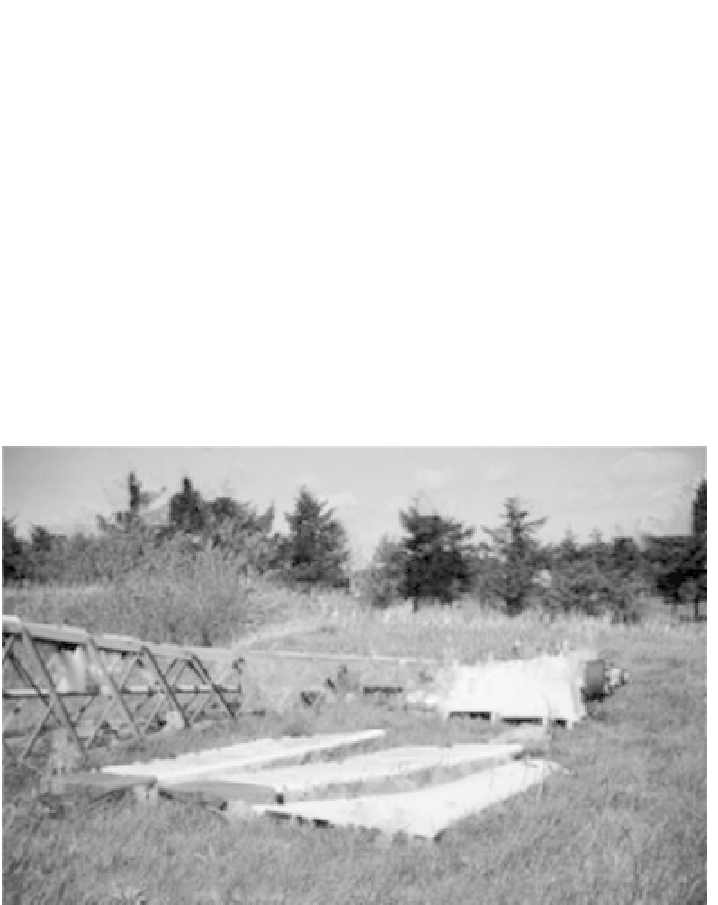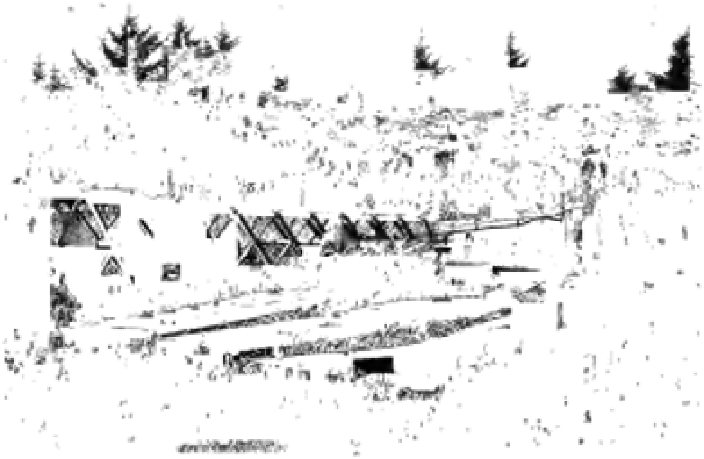Environmental Engineering Reference
In-Depth Information
and designs belonged to Riisager but he did not manufacture,
he depended on his own sub-contractors, whereas the emerging
independent sub-suppliers delivered components to the entire
industry.
Although there were clear diferences in the production methods
between Riisager and those of the new industry, they had something
very important in common compared to the Danish government
and many foreign projects within wind energy: They were based on
Johannes Juul's wind turbine principles.
The Riisager epoch ended around 1985, when the production
stopped. By 2013, there are still some Riisager windmills standing
here and there in the Danish landscape and abroad, providing their
owners with wind-powered electricity.
Figure 7.12
Riisager first-generation wind turbine when it arrived at the
Folkecenter's collection of windmills.
7.9
The National Wind Power versus Tvind's
Bottom-Up Program
In 1975, the Danish Academy for Technical Sciences (ATV)
recommended that work on wind energy should be continued;
the country had strong traditions to build upon. It was no great



Search WWH ::

Custom Search